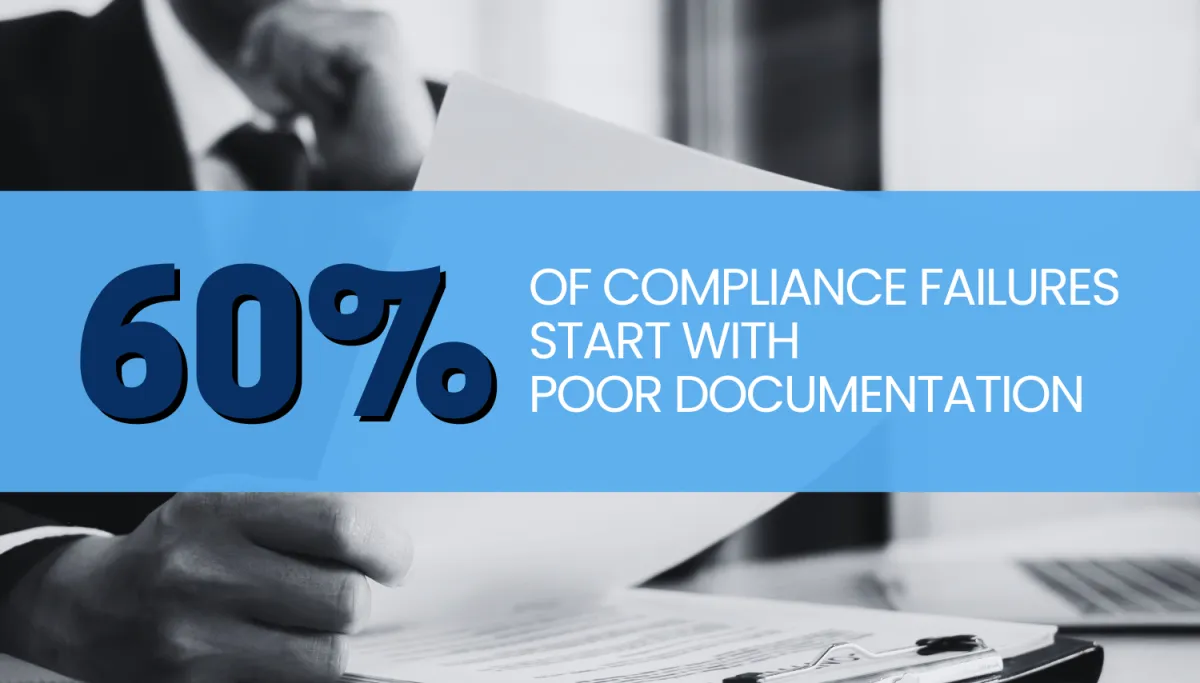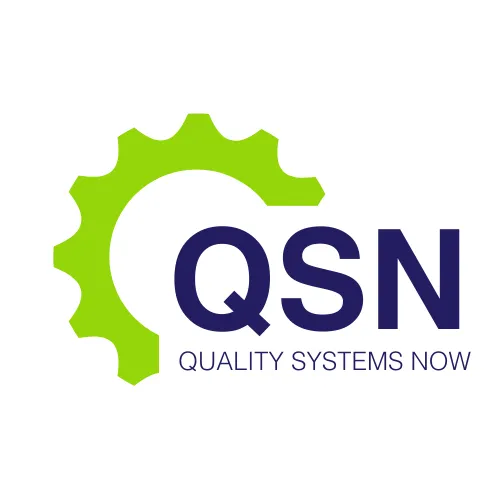LATEST NEWS

60% of Compliance Failures Start with Poor Documentation
In the world of compliance, documentation is the backbone of success. It serves as the foundation for audits, regulatory reviews, and internal quality control processes. Yet, despite its critical importance, poor documentation remains a leading cause of compliance failures. Studies and industry reports suggest that 60% of compliance failures can be traced back to inadequate or inaccurate documentation. This staggering statistic highlights the need for organizations to prioritize robust documentation practices to avoid costly penalties, reputational damage, and operational disruptions.
Join Us for Our Online Training on How to write User Friendly Procedures
The Role of Documentation in Compliance
Documentation is more than just a bureaucratic requirement—it’s a vital tool for ensuring transparency, accountability, and consistency in business operations. In regulated industries such as healthcare, pharmaceuticals, manufacturing, and finance, documentation serves as evidence that an organization is adhering to legal and industry standards. It provides a clear record of processes, decisions, and actions, enabling auditors and regulators to verify compliance.
For example, in the pharmaceutical industry, Good Manufacturing Practices (GMP) require detailed documentation of every step in the production process. Similarly, in the financial sector, anti-money laundering (AML) regulations mandate thorough record-keeping of transactions and customer interactions. Without proper documentation, organizations cannot demonstrate compliance, leaving them vulnerable to fines, legal action, and even shutdowns.
Common Causes of Poor Documentation
Despite its importance, many organizations struggle with documentation. The following are some of the most common reasons why documentation fails to meet compliance standards:
1. Incomplete Records
One of the most frequent issues is incomplete documentation. Missing information, such as unsigned forms, omitted steps in a process, or incomplete data entries, can render a document useless for compliance purposes. Incomplete records not only fail to provide a clear audit trail but also raise red flags for regulators.
2. Lack of Standardization
Inconsistent documentation practices are another major problem. When different departments or teams use varying formats, terminologies, or procedures, it becomes difficult to maintain uniformity. This lack of standardization can lead to confusion, errors, and inefficiencies, making it harder to achieve compliance.
3. Outdated Information
Regulations and industry standards are constantly evolving, and documentation must keep pace. Outdated policies, procedures, or records can result in non-compliance, as they may no longer align with current requirements. Failing to update documentation regularly is a common oversight that can have serious consequences.
4. Human Error
Even with the best intentions, human error can compromise documentation quality. Typos, incorrect data entries, and misinterpretations of guidelines are common mistakes that can undermine the integrity of records. Without proper checks and balances, these errors can go unnoticed until it’s too late.
5. Over-Reliance on Manual Processes
Manual documentation processes are prone to inefficiencies and errors. Handwritten notes, paper-based forms, and spreadsheets are difficult to manage, especially for large organizations. These methods are also more susceptible to loss, damage, or tampering, further increasing the risk of compliance failures.
The Consequences of Poor Documentation
The impact of poor documentation extends far beyond a failed audit. Organizations that neglect proper documentation practices face a range of negative outcomes, including:
Regulatory Penalties: Non-compliance can result in hefty fines, sanctions, or even the revocation of licenses.
Operational Disruptions: Inadequate documentation can lead to process inefficiencies, delays, and errors, affecting overall productivity.
Reputational Damage: Compliance failures can tarnish an organization’s reputation, eroding customer trust and investor confidence.
Legal Risks: Poor documentation can expose organizations to lawsuits, particularly in industries where compliance is tied to public safety, such as healthcare or food production.
Strategies to Improve Documentation Practices
To avoid the pitfalls of poor documentation, organizations must adopt a proactive and systematic approach. Here are some strategies to enhance your documentation processes and ensure compliance:
1. Implement a Document Management System (DMS)
A robust Document Management System (DMS) can streamline documentation processes, reduce errors, and improve accessibility. A DMS allows you to create, store, and manage documents electronically, ensuring consistency and security. Look for a system that offers version control, audit trails, and user permissions to maintain document integrity.
2. Standardize Documentation Procedures
Develop standardized templates, formats, and guidelines for all documentation. Ensure that every team member understands and follows these procedures. Regular training sessions can help reinforce best practices and keep everyone on the same page.
3. Conduct Regular Audits
Internal audits are a valuable tool for identifying gaps in documentation. Schedule regular reviews of your records to ensure they are complete, accurate, and up-to-date. Address any issues promptly to prevent them from escalating into compliance failures.
4. Automate Where Possible
Automation can significantly reduce the risk of human error and improve efficiency. Use software solutions to automate repetitive tasks, such as data entry, report generation, and compliance checks. Automation also ensures that documentation is consistently updated and aligned with regulatory requirements.
5. Train Your Team
Invest in training programs to educate your team on the importance of documentation and compliance. Provide clear instructions on how to create, maintain, and store records properly. Encourage a culture of accountability where everyone takes responsibility for the quality of their documentation.
6. Stay Informed About Regulatory Changes
Compliance requirements are constantly evolving, so it’s essential to stay informed about changes in regulations and industry standards. Assign a dedicated team or individual to monitor updates and ensure that your documentation practices remain compliant.
7. Foster a Culture of Continuous Improvement
Documentation is not a one-time task—it’s an ongoing process. Encourage feedback from your team and stakeholders to identify areas for improvement. Regularly review and refine your documentation practices to adapt to changing needs and challenges.
Conclusion
Poor documentation is a leading cause of compliance failures, but it’s also a problem that can be addressed with the right strategies and tools. By understanding the importance of documentation, identifying common pitfalls, and implementing best practices, organizations can significantly reduce their risk of non-compliance. Investing in robust documentation processes not only safeguards your business against regulatory penalties but also enhances operational efficiency and builds trust with stakeholders.
At Quality Systems Now, we specialize in helping organizations streamline their compliance processes and improve documentation practices. Whether you’re looking to implement a Document Management System, conduct an internal audit, or train your team, we’re here to support you every step of the way. Don’t let poor documentation be the weak link in your compliance efforts — take action today to protect your business and ensure long-term success.
